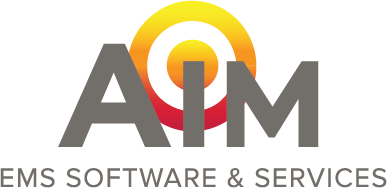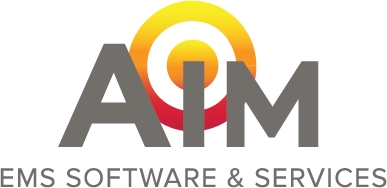.png?width=723&height=407&name=AIM%20Blog%20Header%20Images%20(1920%20%C3%97%201080%20px).png)
In a dynamic EMS landscape, the challenges are as varied and vast as the communities your agency serves. To succeed today, your agency must navigate a complex healthcare environment, balancing the immediate needs of patients against operational constraints, technology changes, and regulatory requirements. By applying strategic approaches to overcome these obstacles, you can position your EMS agency to grow and thrive.
The Multifaceted Challenges
A variety of issues can hamper your EMS operation and make it tough to provide high-quality patient care while you also optimize revenue and maintain profitability.
- Staffing Shortages. EMS agencies are at a critical juncture as they grapple with a significant shortage of qualified personnel. The combination of a competitive job market and persistent wage inflation makes it tough to attract and retain skilled employees, who often have higher-paying options to choose from. Labor scarcity also places immense pressure on your existing staff, potentially leading to burnout, while threatening patient care quality.
- Rising Service Demand. An aging population and increase in chronic diseases means your agency’s services are in more demand than ever. But at a time when your community is in greater need of emergency services, an inability to stay fully staffed can jeopardize care quality and response speed.
- Changes in Reimbursement. With fewer ambulance transports falling under traditional Medicare and many different payers applying their own coverage and billing rules, there’s greater risk than ever that a claim could be denied or reimbursement delayed. And if your agency isn’t reimbursed for a treat/no transport call—a common problem—your revenue will suffer.
- Financial Pressures. Operating in a cost-constrained environment, and plagued by persistently high inflation and rising wages, your EMS agency must perform a delicate balancing act to ensure you deliver high-quality care while remaining financially viable. Insufficient reimbursements and increasing expenses hamper your ability to expand your services or invest in new technologies.
- Regulatory Requirements. Complying with national, state, and local regulatory requirements is an essential part of running a sound EMS operation and critical to ensuring patient safety. But at a time when skilled labor is in short supply, keeping current with complex, frequently changing regulations is especially difficult.
Real-World Solutions
By optimizing operational processes and shoring up your technology, your EMS agency can overcome these industry-wide challenges and continue to deliver high-quality care while ensuring profitability. Strategic measures like the following provide a great starting point.
Leverage the Power of Technology Integration
Your dispatch, PCR, and billing functions all demand robust technology that automates processes and improves efficiency. When these software solutions are fully integrated, the workflow is smoother and your existing staff is equipped to handle more volume, relieving some of the pressure of a labor shortage.
Place Greater Emphasis on Revenue Cycle Management (RCM)
Ensure your billers are going beyond the basics of getting bills out quickly and posting payments timely. With the right software functionality, they can easily manage pending bills, set reminders to follow up on claims, and confirm that claims are paid at the correct rate. Software that is purpose-built for EMS agencies also automates critical steps like verifying insurance eligibility and posting EOBs, which improves accuracy and saves time.
Don’t Overlook Collections
EMS agencies often write off bills after a certain period, hampering their profitability. Depending on the age of your receivables and the total amount past due, it might be worth outsourcing collections to a third party instead.
Optimize Your Workflow
When labor is in short supply, operational efficiency is a must. And one of the most effective ways to improve efficiency is to automate the workflow across your dispatch, PCR, and billing functions. All your EMS software solutions should enable you to configure the associated workflows to streamline processes and support how your agency operates.
For instance, consider configuring your dispatch software to support separate workflows for emergency vs scheduled transports. Ensure your ePCR software is set up to move patient information from patient care to billing automatically, so claims are submitted fast and accurately. And make sure your billing software is configured to support your specific billing process, whether a single biller handles the process end-to-end or different team members each handle certain steps. The more experience your software vendor has in the EMS industry, the better equipped they’ll be to configure your solutions for optimal efficiency.
Use Data to Your Advantage
In challenging times, you have to make informed decisions about allocating your limited resources. Data analytics can provide visibility into the insights you need to ensure you’re optimizing your resources and applying them as effectively as possible. Many EMS agencies turn to their software vendor for reports on key metrics related to crew productivity, response times, and other measures, so they can make data-driven decisions that improve operational performance.
Learn How AIM Can Help
AIM’s robust software solutions address today’s most critical EMS industry challenges—helping agencies work efficiently, optimize revenue, and operate profitably. Thousands of EMS agencies turn to AIM for Dispatch, ePCR, and Billing Software that’s secure, cloud-based, and easy to use.
For a deeper dive into the issues facing EMS agencies and effective solutions, download our guide, “How EMS Agencies are Tackling Their Toughest Challenges.”



